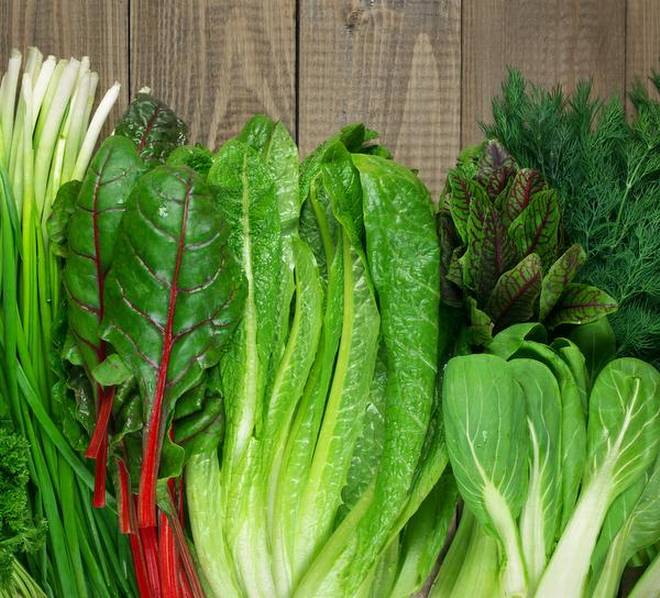Go green
Those leafy greens that we ply our kids with but leave in the bowl ourselves, must become a part of our daily lives, because they are protective foods
We are simply not eating enough greens, says a recent National Institute of Nutrition, Hyderabad, survey. Bengaluru-based nutritionist and president of the Indian Dietetic Association, Sheela Krishnaswamy, and Chennai-based dietitian, Dharini Krishnan, tell us why these nutrients are crucial and how best to get them from our leaves.
Mustard leaves for Vitamin C
A winter staple, 100 g of mustard leaves contain almost 60 mg of Vitamin C (Indian Food Composition Tables 2017) — a micronutrient necessary for healing wounds, tissue repair and regeneration, and iron absorption. It’s also a powerful antioxidant. Adults need about 40 mg/day of Vitamin C, while pregnant and lactating women are recommended 60-80 mg/day. Vitamin C is easily destroyed by heat, so cook the saag in a less heat-intense way (steaming for a couple of minutes). Once your dal is boiled, open the cooker and put in cut leaves; close, so it cooks in the steam. Or steam and put it into a soup. Smoking also severely reduces the absorption of this powerful nutrient in our body.
Spinach for iron
Popeye was on to a good thing. Adults need 17 mg/day of this nutrient, with women requiring even more of it (21 mg/day).
A pregnant woman’s requirement is even higher — 35 mg/day, so chomping on spinach is a good strategy. 100 g of this leafy green will give you 2.95 mg of iron, though heat will reduce it to 1.4 mg, so cook minimally — spinach soup is a good bet. Across the country, iron deficiency is a widespread phenomenon, especially in women of reproductive age. Iron also impacts IQ during foetal development, so pregnant women are advised to make up the shortfall.
Vitamin C improves our absorption of this mineral, so try amla pickle with your meal or sprinkle amla powder over your soup.
Drumstick leaves for Vitamin A
Moringa is the world’s new go-to-for-everything leaf. With good reason though, because it has substantial quantities of fibre, vitamin A, B complex and C, elevating it to superfood status. Especially rich in vitamin A (6,760 microgram in 100 g), this leaf will promote tissue growth in adolescents and pregnant women, protect your eyesight, reduce chances of developing night blindness and has a role in promoting hair growth. Vitamin A isn’t affected by heat from cooking. But, it’s a fat-soluble vitamin, so you need a teaspoon of oil for its absorption into the body.
All you need is about 20 g, about a bowl, for half your daily needs.
Pregnant women need a little more, while lactating mothers need almost double. If you add curry leaves to the mix or have them as a chutney, you’ll add to your overall Vitamin A intake.
Pak choi leaves for potassium
A staple in Chinese stir-fries, pak choi leaves deliver a fair amount of potassium. This mineral acts as an electrolyte in our blood stream, helps maintain fluid balance and blood pressure, and is integral for muscle contraction and expansion. We need about 2,500 mg/day, some of which you’ll also get from salt, so regulate your salt intake accordingly. Easily absorbed into the body, potassium also isn’t affected by heat. Still, a stir-fry cooked on medium heat will retain the other nutrients in the vegetable too.
Cabbage for calcium
The humble cabbage is a surprising storehouse of calcium, though we usually identify the leafy head more as a source of fibre: 100 g of this cruciferous veggie provides 51 mg of this crucial bone-forming and -repairing mineral, though we absorb only 80% of this during digestion. Potassium, in a 1:1 ratio with calcium, aids significantly in its absorption, and is thankfully naturally present in the vegetable.
Raw cabbage consumption isn’t recommended in India because of worm infestation, and while high heat doesn’t reduce the nutrient (minerals are not affected by heat), it does reduce its absorption. Blanch it to use in coleslaw or eat it as kimchi (you can make it at home), the Korean pickle staple, where the long duration during pickling and the vinegar kills worms. Adults need 600 mg/day of calcium, while pregnant and lactating women’s requirements shoot up to double, at 1,200 mg/day.
Hi! I am a robot. I just upvoted you! I found similar content that readers might be interested in:
http://www.thehindu.com/sci-tech/health/go-green/article19991891.ece
vegetable good for health.
Nice